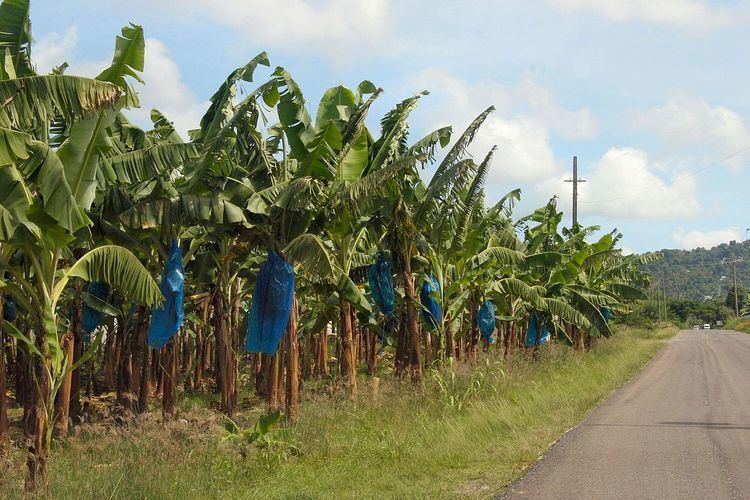 | ||
The banana industry is an important part of the global industrial agrobusiness. Most bananas go into export and international trade for consumption in Western countries. They are grown on banana plantations primarily in Latin America and the Caribbean as well as Central and South America.
Contents
Ecological impact
As is the case with all monocultures, the intensive agroindustrial methods - bananas require large amounts of pesticides (estimate: 35 pounds (16 kg) / 1 acre (0.40 ha)) - for banana production have considerable environmental impact up to ecosystem destruction through deforestation. Moreover, global transport and plastic packaging leaves a large carbon footprint.
Cash crop
In 2012 the volume of global gross banana exports reached a record high of 16.5 million metric tons (3.6×1010 lb), 1.1 million tonnes (or 7.3 percent) above 2011 level. Bananas are the most popular fruit in the United States, with more consumed annually than apples and oranges combined. In spite of the multitude of banana species across the world, even only taking into account the cultivated ones, industrial production is dominated by the Cavendish banana.
Spread of plant disease
Tropical Race 4 is thought to be distributed globally by soil-contaminated equipment from the multinational plantantion owners.
Companies
In 2013, only 5 multinational fruit companies controlled 44% of the international banana trade:
Along the global banana supply chain major supermarket chains in the US and EU have gained market power over the big producers in the 21st century as they dominate the retail market and increasingly purchase from smaller wholesalers or directly from growers.
Countries
All pages with titles containing banana production
